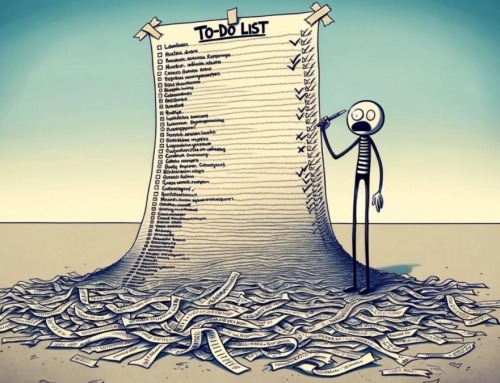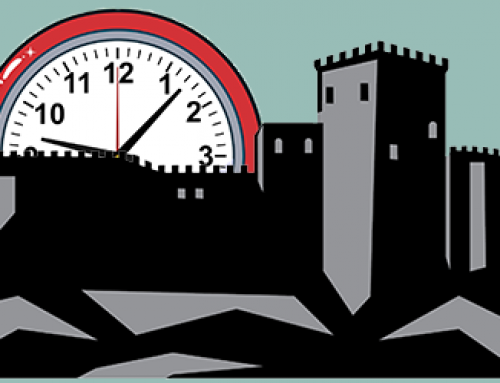Progressive Goal Planning in a Company Setting
Progressive Goal Planning can be used as a way to describe your company’s approach to goal setting on an individual, departmental, or company-wide basis. Progressive Goal Planning sets the tone for frequent and successful goal campaigns. It sets the tone for individual and personal engagement in goals.
It can create a culture and establish an expectation of a contribution from each employee toward a particular goal. It sets a framework and an expectation for achievement and success and establishes a culture of productivity. It invites each employee to push to regularly set and pursue goals. It invites managers to act as coaches in the goal creation process.
The main idea is that, if your organization sets enough goals, those involved will become more adept at discerning good goals from bad goals, and more skillful in establishing goals that can help you achieve your greater mission or vision.
A company that commits to the “Progressive Goal Planning” Methodology has embraced a commitment to:
- Improve people, performance, and processes.
- Fail fast and learn from mistakes.
- Measure and keep score.
- Recognize and develop successful habits.
- Build people.
- Embrace positive change.
- Coach rather than criticize.
A word of caution: don’t confuse the frequency of goals for a lack of attention to high priority goals. If your company is able to clearly articulate and identify a truly important goal, then, of course, it should be front and center. Other, more frequent goals should be created to support this overall goal.
It is also important that your managers emphasize and embrace the coaching aspect of goal planning. A well implemented “Progressive Goal Planning” culture with a commitment to coaching will have a higher percentage of goals achieved than goals not achieved.
Progressive Goal Planning in a Personal Setting
Progressive Goal Planning can also be embraced on a personal level, whether it involves work and career objectives or goals in your home or family life. Just as Personal Goal Planning can set the tone and establish a culture of frequent and successful goal setting and achievement in a company environment, it can help individuals cultivate the beliefs, commitment, and habits to unlock their full potential and achieve personal success.
On a personal level, if you have committed to the Progressive Goal Planning methodology, you have embraced the following:
- A belief that you are capable of greatness beyond your current vision
- A desire to improve your ability to get things done
- A desire to improve your interactions and relationships with those around you
- A commitment to learn quickly from mistakes
- A commitment to measure and recognize your success
- A commitment to personal responsibility and accountability
Tips for Applying Progressive Goal Planning
- Emphasize frequency. Any achievable goal, today that gets you closer to your ultimate objective, is better than a more ambitious but less attainable goal tomorrow. Lead Measures, which are short-term goals or measures that are predictive of your larger goals, focus on achievement in the near-term and can trigger success. These are usually short-term measures that you can influence or do something about, and if you are attentive to these measures and attain their corresponding results, you will find yourself on the path to achieve your ultimate goals.
- Emphasize the attainable. Big, hairy, audacious goals, or BHAGs, are good for Lag Measures, which are the ultimate, long-term goals that you are trying to achieve. BHAGs and Lag Measures can be good, for example, in aligning the troops in a company and instilling excitement and vision. However, an individual’s impact should be measured on a more frequent basis and using Lead Measures. In order to coach employees and encourage positive outcomes, the measurements should be much more granular and more attainable.
- Don’t follow goals blindly. Just because a goal is defined does not mean that it is always the right one or that it will get you to where you ultimately need to be. It is important to periodically evaluate your current goals and reward systems to ensure that they are still taking you where you want to be.
- Focus on the opportunity for improvement. Use measurement and frequent review to identify opportunities for improvement and coaching. Emphasize constructive, positive prospects and avoid criticism, including self-criticism.
- Reinforce & Reward Results. Rewards depend a lot on the context. In a personal setting, the reward may be as simple as the feeling of accomplishment. In a company setting, you may need to use monetary incentives, prizes, or other rewards. There are numerous possibilities, so use your imagination and your knowledge of individual motivators to determine rewards and use them for positive reinforcement.
Getting Started with Progressive Goal Planning
To learn more about Progressive Goal Planning and explore tools and resources that are available to help you get started, our planning consultants can help.
Visit our website for more information, email us at sales@planplusonline.com, or contact us by phone at 801-438-3460.
To learn more about Progressive Goal Planning, watch this video:
You can download the Progressive Goal Planning whitepaper here.






